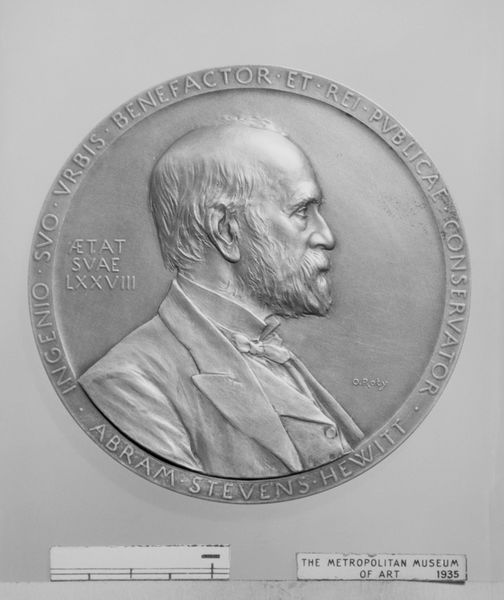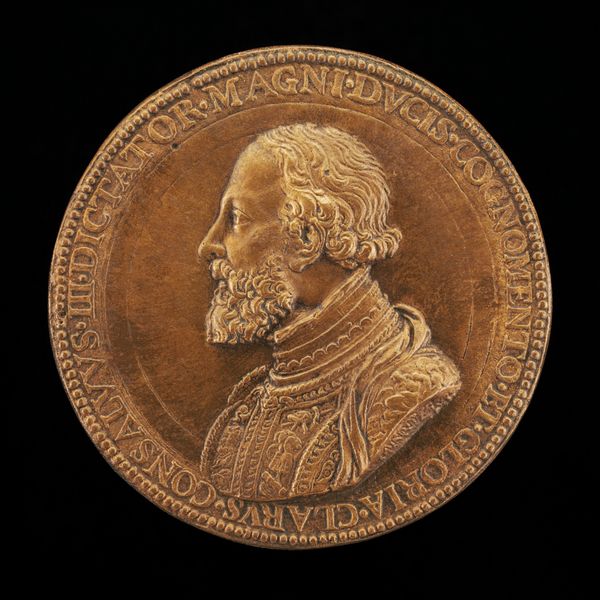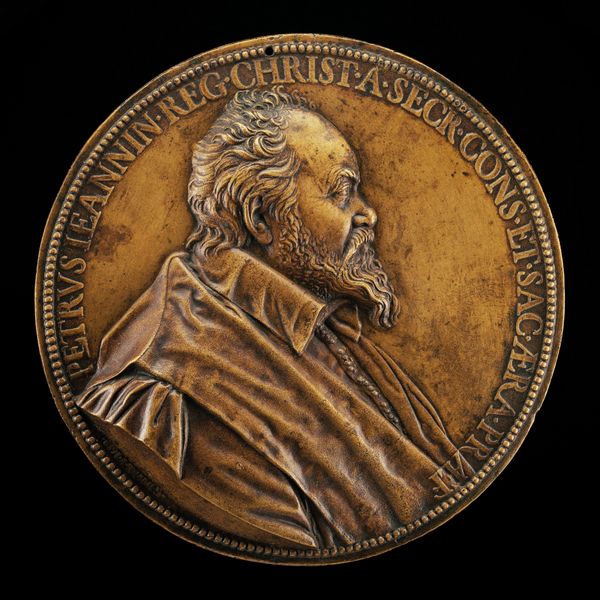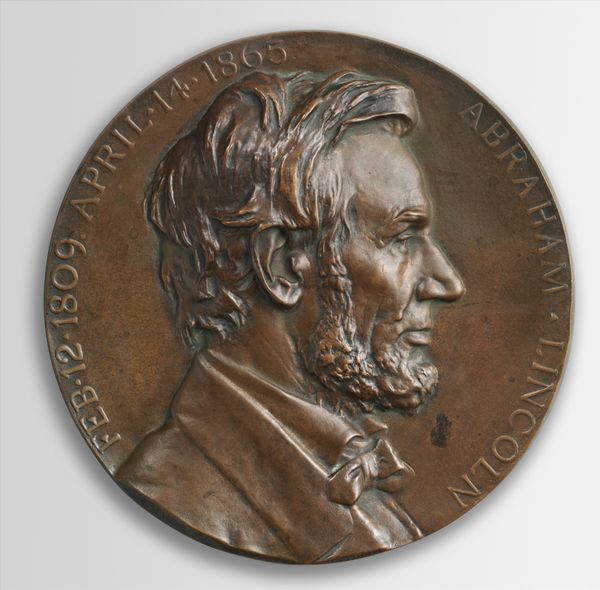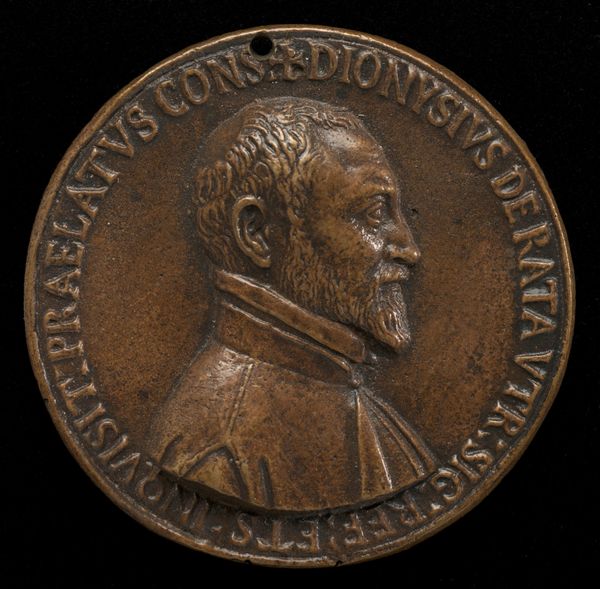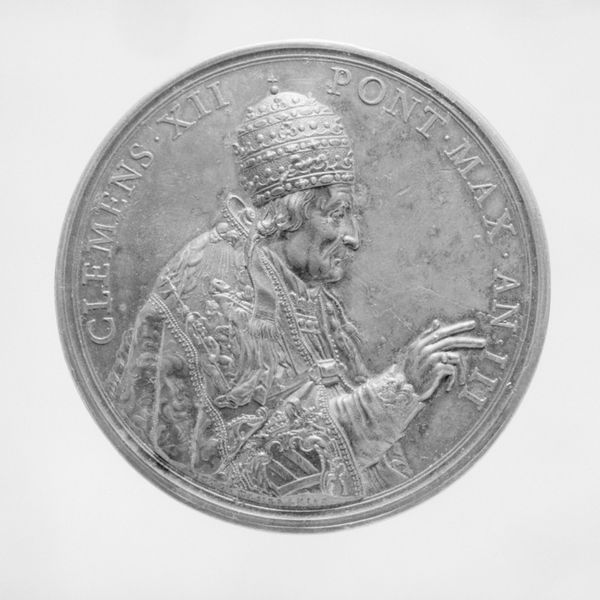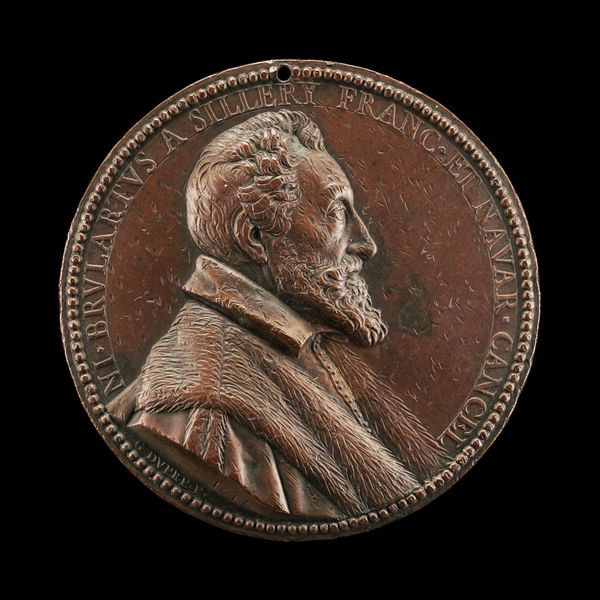
bronze, sculpture
#
portrait
#
medal
#
bronze
#
11_renaissance
#
sculpture
#
decorative-art
Dimensions: Diam. 7 3/8 in. (187 mm.)
Copyright: Public Domain
Curator: Standing before us is a bronze portrait medal of Pierre Jeannin, created by Guillaume Dupré in 1618. Jeannin, who lived from 1540 to 1622, was a prominent figure in French politics. Editor: It's strikingly austere, almost severe. The low relief emphasizes Jeannin’s sharp profile, creating a palpable sense of gravity and authority. You can really sense a man carrying great responsibility. Curator: Indeed. The choice of bronze itself is significant. Beyond being a durable material suitable for commemorative objects, bronze carried connotations of permanence, associated with rulers and the Roman Empire—an attempt to link Jeannin with figures of historic power. The Latin inscription circling his image furthers this sense of authority. Editor: I wonder about the message. How do we interpret the symbolic function of the inscription in relation to Jeannin’s life and to the cultural values it’s trying to communicate? Curator: It’s a testament to Jeannin's role as a servant of the French crown. He played a vital role during a tumultuous period in French history, and Dupré clearly intended to immortalize him in this capacity. By studying this image, one can understand how portraits were vehicles that displayed wealth and status during that period. Editor: But what isn’t shown is equally telling. Dupré leaves out aspects of Jeannin's personhood that might not be aligned with such idealized statecraft. How did it shape public perceptions of figures like Jeannin, and to what extent did he buy into it? Curator: Such medals served as propaganda but also, practically speaking, they were distributed among diplomats, members of court, and important people in order to foster allegiances and construct symbolic networks. Editor: When viewing objects of art that served these functions, I tend to ponder on how power shapes even seemingly straightforward portraiture. By contemplating its role in power structures, perhaps we can consider new ways of seeing and acting within our own societies. Curator: I find this commemorative medal quite compelling. It reveals so much about the interplay of art, politics, and identity in the 17th century. Editor: Agreed, a powerful reminder that artistic creations are rarely neutral; they are shaped by the forces and interests of their time.
Comments
No comments
Be the first to comment and join the conversation on the ultimate creative platform.
